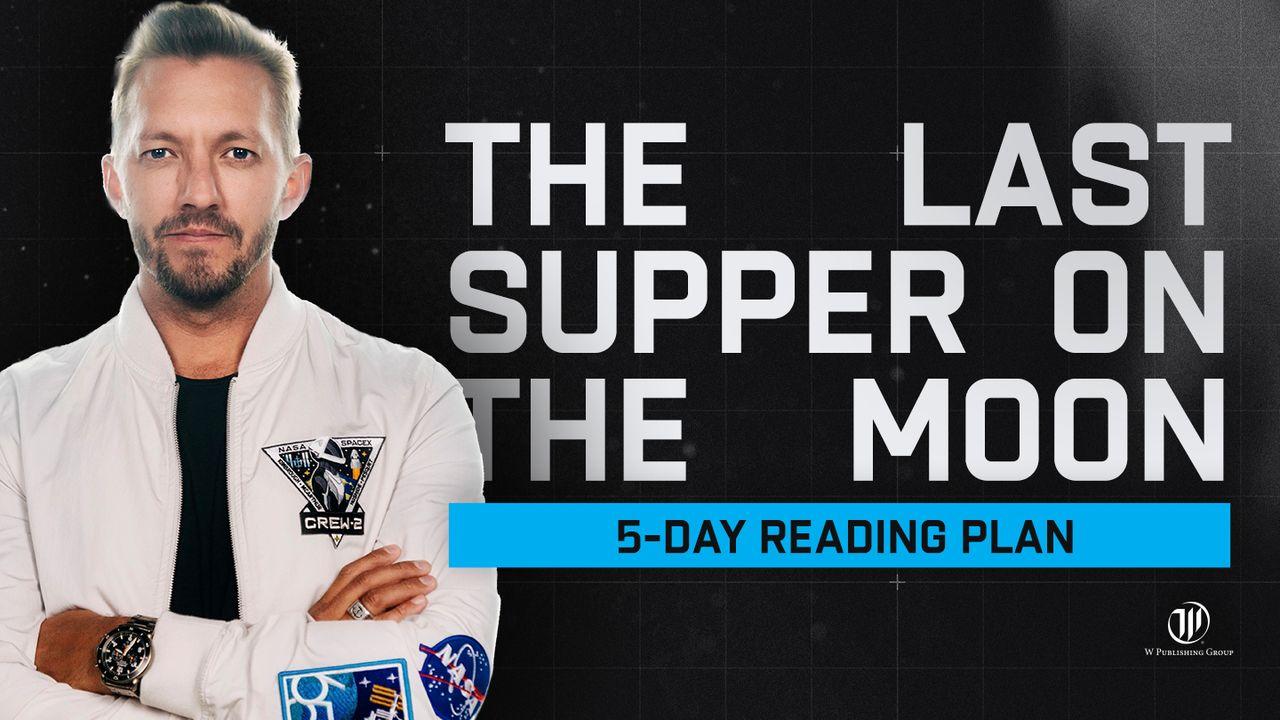Plan Info
The Last Supper on the MoonSample

Rock[s] of Ages
I touched the moon once. It was a part of a hands-on exhibit at Kennedy Space Center (KSC) in Florida in 2014. Near the end of the tour, just before you exited through the gift shop, there was a display where you could reach your hand into the little hole in the plexiglass and touch a lunar sample brought back from Apollo 17. The germaphobe in me told me not to, but the part of me who loves history said yes. To have my hand on a piece of another world? Amazing. I would normally say I’ll never wash my hands again, but I couldn’t wash my hand fast enough.
Quarantine is a way of life for NASA. In all the years astronauts have been going on missions, they have endured isolation in the weeks before launch. No one wants to be sick in space. The only way to keep that from happening is to endure total isolation in the days before the launch—also known as the day of “lighting the candle.”
For most of us, before 2020, quarantine was something from the history books. People were quarantined during the dark days of the plague or when traveling on ships where scarlet fever broke out. Now it is something we all have memories of. Memories that are a little too fresh. After sheltering in place, some of us discovered firsthand why solitary confinement is a punishment in prison.
Apollo 11 was the first mission where the astronauts had to quarantine before and after the mission. The former because of concern over earthbound infections like the 1968 flu pandemic. The latter because of fear that some moon-borne alien plague would smuggle its way back with the astronauts in the dust on their spacesuits or ship and unleash an apocalypse on the earth through a lunar virus that medicine had no answer for.
The measures in place for recovery when Columbia splashed down were stunning. When Navy frogmen jumped into the ocean from a helicopter, they secured a rubber inflatable ring—a giant version of the kind a child would play with in the pool—around the ship so it couldn’t sink, then inflated two rafts. One designated frogman carefully opened the door and threw in suits the three astronauts put on to cover all potential germs, and then they got into the raft with him. He then sprayed them down from head to foot. He also made his way around the charred vessel as it bobbed like a cork in the ocean and sprayed it down as well. Then and only then were they ferried into the aircraft carrier and hoisted aboard. On the ship was an Airstream travel trailer. They entered the camper, and the door was sealed.
The three astronauts, still inside the trailer, were then transported to Hawaii, where the Airstream was loaded onto a plane to Houston. From there, their isolation chamber was transferred to a secure, sealed facility that had been carefully built for them. For three weeks, they, and the forty-seven-and-a-half pounds of moon rocks they brought home with them, were studied by a team of surgeons who had to make sure no diseases had stowed away with them.
When the sand in their quarantine hourglass ran out after twenty-one days, they were able to come out. They had a clean bill of health—no alien bacteria. It was then the moon rocks had their moment to shine.
People stood in lines wrapped around buildings just to get a glimpse of these rocks. They were spoils from the cosmic war, and everyone wanted to see them with their own eyes.
Many, many counterfeit moon rocks have been sold over the years—especially right after the initial moonshot. In 2009, while doing some testing, the national museum of the Netherlands discovered a moon rock—one of its most prized possessions—wasn’t from the moon and wasn’t even a rock. It was petrified wood, likely from Arizona. For forty years, that piece of Southwestern wood sat next to a plaque boasting it was brought back by Apollo 11. The little plaque said “moon rock,” but all they had was overpriced petrified wood.
How many people had come to see what they believed was the real thing, only to be disappointed when they realized it was fake? How many things in this life have you grabbed hold of, thinking it was the real deal, only to be disappointed?
There is only one thing in this life true and everlasting and never-changing—Jesus Christ. He is the one true God, the Rock of Ages. Trust me, he’s real, and he’s waiting for you.
All you need to do is what I did that day in Florida when I touched the moon: reach out. Only you must reach out and touch a far greater and far older rock—the Rock of Ages.
Respond
When did you first come to know about Jesus Christ?
Have you accepted him as your Savior? Describe the experience.
Prayer
Father God, I declare you are the Rock of Ages, and I am grateful that I can reach out and touch you.
Scripture
About this Plan

In this five-day plan based on Levi Lusko's book, The Last Supper on the Moon, learn how your consideration of the heavens, the moon, and the stars, can directly impact your understanding of God's incomprehensible love f...
More
We would like to thank HarperCollins/Zondervan/Thomas Nelson for providing this plan. For more information, please visit: https://www.lastsupperbook.com






![[The Epistle of Philemon] Rewards of Faith and Love](/_next/image?url=https%3A%2F%2Fimageproxy.youversionapi.com%2Fhttps%3A%2F%2Fs3.amazonaws.com%2Fyvplans%2F46906%2F320x180.jpg&w=640&q=75)


